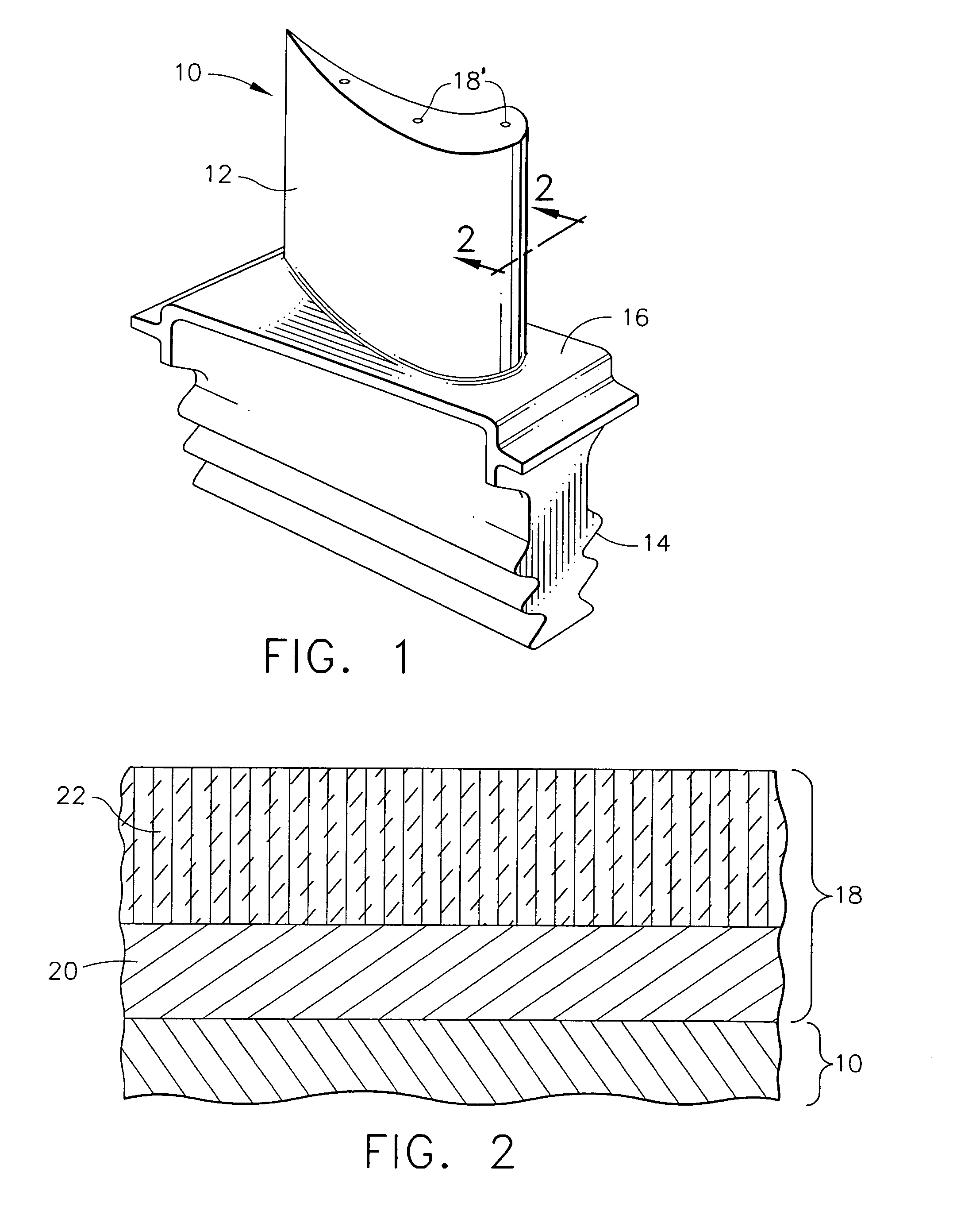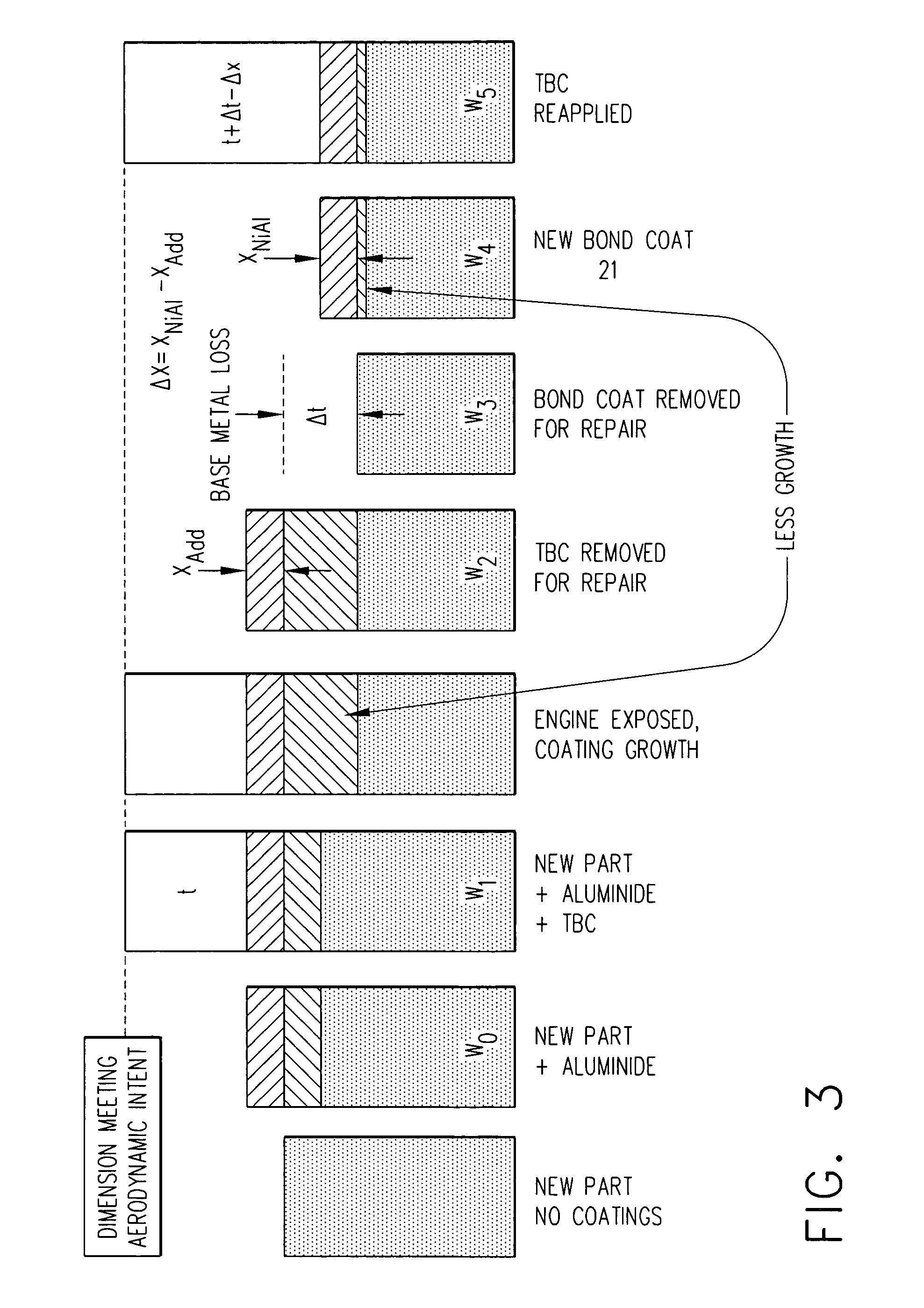Method for repairing coated components using NiAl bond coats
a coating and coating technology, applied in the direction of solid-state diffusion coating, superimposed coating process, machines/engines, etc., can solve the problems that affect the efficiency of the turbine, and achieve the effect of increasing the subsequent engine operation efficiency
- Summary
- Abstract
- Description
- Claims
- Application Information
AI Technical Summary
Benefits of technology
Problems solved by technology
Method used
Image
Examples
Embodiment Construction
[0023]The repair method of the present invention is generally applicable to components that operate within environments characterized by relatively high temperatures, and are therefore subjected to severe thermal stresses and thermal cycling. Notable examples of such components include the high and low pressure turbine nozzles and blades, shrouds, combustor liners and augmentor hardware of gas turbine engines. Other examples include airfoils, in general, and static parts such as vanes. One particular example is the high pressure turbine blade 10 shown in FIG. 1. For convenience, the method of the present invention will be described in the context of repairing blade 10. However, one skilled in the art will recognize that the method described below may be readily adapted to repairing any other gas turbine engine part coated with a thermal barrier coating system.
[0024]The blade 10 of FIG. 1 generally includes an airfoil 12 against which hot combustion gases are directed during operatio...
PUM
| Property | Measurement | Unit |
|---|---|---|
| thickness | aaaaa | aaaaa |
| density | aaaaa | aaaaa |
| density | aaaaa | aaaaa |
Abstract
Description
Claims
Application Information
 Login to View More
Login to View More - R&D
- Intellectual Property
- Life Sciences
- Materials
- Tech Scout
- Unparalleled Data Quality
- Higher Quality Content
- 60% Fewer Hallucinations
Browse by: Latest US Patents, China's latest patents, Technical Efficacy Thesaurus, Application Domain, Technology Topic, Popular Technical Reports.
© 2025 PatSnap. All rights reserved.Legal|Privacy policy|Modern Slavery Act Transparency Statement|Sitemap|About US| Contact US: help@patsnap.com



